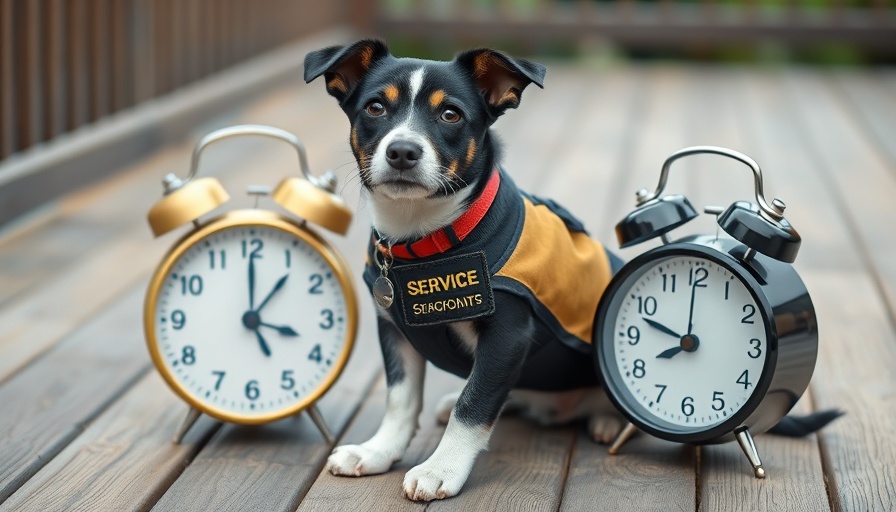
Communicating Difficult News with Empathy
In the realm of dog training, service dog trainers often find themselves navigating complex conversations with clients. A prevalent challenge arises when a trainer must inform an owner that their dog may not be suitable for public access work. This scenario can be particularly tough, especially for owner-trainers who might have set their hearts on using their dogs in public. It’s a fine line between providing honest feedback and managing a client's emotions effectively.
Setting Realistic Expectations From the Start
One effective strategy to ease these potential difficult conversations is to set realistic expectations early on. Trainers can use client-centric educational materials well before the first meeting. Simple statements about what characteristics are needed in a service dog can help preempt any disappointment. For example, mentioning that dogs need to be friendly and not reactive in public is a good starting point. This groundwork allows clients to mentally prepare themselves for the evaluation process.
Empathy: The Cornerstone of Effective Communication
Empathy plays a crucial role in these discussions. When delivering disappointing news about a dog’s suitability for public access work, trainers should acknowledge the owner’s feelings. Giving them space to express their disappointment is essential. For instance, using phrases that highlight the dog's strengths while discussing limitations can shift the owner’s perspective. Instead of stating that a dog is 'reactive', trainers might phrase it more positively, emphasizing the dog's alertness and sensitivity as potentially valuable traits in other contexts.
The Importance of Education in Service Dog Training
For many clients, the world of service dogs and training is shrouded in ambiguity. Prospective owner-trainers often arrive with expectations shaped by limited information, leading to misunderstandings about what service dog training entails. Thus, educating owners about the complexities of training is essential. Explaining the demands placed on working service dogs can help in easing their disappointment, as they understand that their dog may excel in other roles that better suit its personality.
Why Communication Matters
Effective communication between trainers and clients is not just about conveying information; it’s about building trust. As highlighted in the AZ Dog Smart Academy blog, a trainer’s success largely hinges on their ability to foster understanding and connection with clients. Their engagement in the training process can significantly influence outcomes, not just for the dog but also for the owner. When trainers listen and respond empathically, clients can feel more secure and understood.
Tools for Improving Client Relations
One way to enhance communication is by developing tools that support client understanding. This can range from using visual aids during consultations to creating straightforward informational brochures about service dog qualifications. Additionally, adapting learning styles can also be beneficial. Consider offering to explain concepts via video or written formats based on the client’s preference. This approach demonstrates the trainer’s commitment to the client's learning journey.
Fostering a Supportive Environment
Creating a safe and supportive setting for clients is essential, especially when delivering tough news. Dogs symbolize companionship, and clients often have emotional investments in their pets. Thus, trainers should validate their feelings and offer actionable solutions for them to consider moving forward, even if that means exploring different aspects of dog ownership or types of service work that better fits the dog’s profile.
Encourage Action with Empathy
As we delve into the intricate and emotional fabric of service dog training, one valuable lesson emerges: empathy and understanding pave the way for greater client success. Trainers should take this opportunity to guide clients on potential paths forward, whether that’s in tailoring their expectations or exploring alternative training techniques. Remember, providing thoughtful insight today can illuminate a clear and rewarding journey for clients and their dogs.
Want to improve your communication skills as a dog trainer? Whether you're in the service dog training business or simply an enthusiast, enhancing these skills can lead to better outcomes for both you and your clients.
 Add Row
Add Row  Add
Add 




 Add Row
Add Row  Add
Add 

Write A Comment